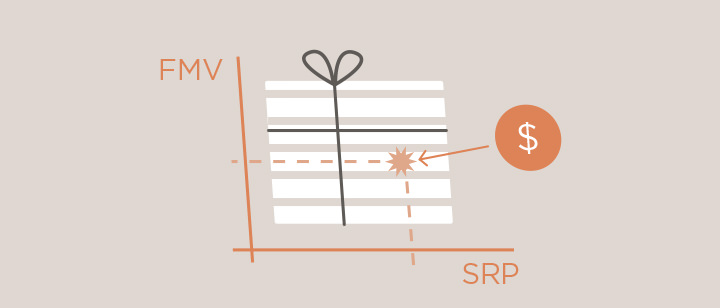
How to Accurately Set Starting Bids For Your Items
Hosting a silent auction is an excellent way to raise money for your organization or cause. And while conceptualizing an auction and compiling a list of items to sell is quite straightforward, many struggle with the more technical details associated with it.
One of the most important decisions of any silent auction is deciding on the starting bid of each item. While this might not seem extremely difficult to determine, it can be quite tricky.
If you set the price too low, you risk undervaluing the item and having it sell for way less than its fair market value. If you set the price too high, you could deter potential bidders and not sell the item at all.
With that in mind, we'll take a look at a number of different factors to consider when accurately setting a starting bid for your items.
Minimum bids vs starting bids
Before we get into a detailed explanation of starting bids, it's important to differentiate between starting bids and minimum bids.
A minimum bid - also known as the reserve price - is the minimum price threshold that an item has to reach in order to be sold.
A starting bid - also known as the opening bid - is the price threshold that has to be met to start the bidding.
A starting bid not only gives bidders an idea of how much an item is worth but it also inspires excitement and competition among attendees and encourages them to bid more.
Fair market value and suggested retail price
There are two factors that can strongly indicate how to accurately price an item - the fair market value (FMV) and the suggested retail price (SRP).
The FMV refers to the price at which an item is sold and considered fair when all parties involved understand all of the relevant facts of the transaction, make the deal willingly, and aren't pressured by outside incentives. There's no formulaic way of determining the FMV. However, a good strategy is to look online and see what other people are willing to pay for the same and similar items.
The second factor is the SRP. The SRP is the price that the product's manufacturer recommends; it's the price that the item would be sold for in a store. Since all of these prices are readily available on almost any product, it's a much more reliable indicator of an item's new value.
By using these two metrics, it's possible to determine an accurate starting bid.
Bid increments
After setting the starting bids for your items, you'll have to turn your attention to setting bid increments - the amount that each successive bid will increase by.
There's a certain art to determining this number as well; too high and you discourage more bidding; too low and you risk selling the item for much less than it's worth.
You also want to consider the balance between the starting bid and the bid increments of an item.
If you set the starting bid of an item high, keep bid increments slightly lower so the price won't jump dramatically after a few bids, and attendees are more incentivised to continue bidding.
If the starting bid is low, then set a bid increment of about 10% of the item's FMV to keep attendees interested while minimizing the chances that the item will sell for less than it's worth.
And that's it. If you have any questions about setting starting bids, understanding fair market value and suggested retail price, or bid increments, please don't hesitate to get in touch at support@bidwell.auction.
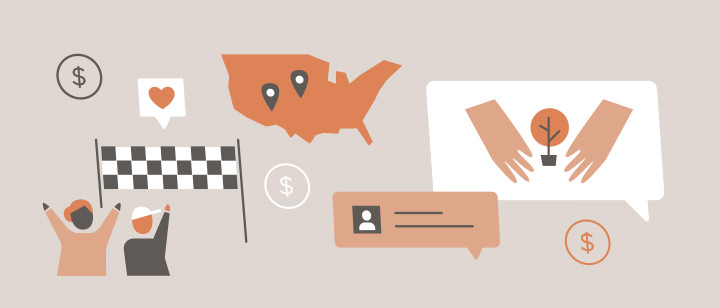
Effective Ways to Grow Your Donor Base
Nonprofits generally draw their income from two primary sources - grants and donations. If you're focusing on donations, then having a reliable list of donors that you can count on to support your organization is going to greatly affect the amount of money you can raise for a given cause.
A donor base is also an incredible resource when planning your next silent auction. It gives you a list of contacts who you know are interested in your cause, and therefore more likely to contribute when asked to do so.
But how do you grow your donor base, especially if you're a new nonprofit or a fledgling organization? In order to attract new supporters, you have to be savvy with your marketing and fundraising initiatives. You need to coordinate an effective strategy to not only engage donors of all sizes but retain them once you have their initial support.
Below, we'll take a look at a few ways to employ these strategies and look at some concrete examples of how you can grow your donor base.
Make use of clear messaging
When it comes to attracting new supporters to your cause or nonprofit, having clear, concise communication is everything. Your messaging, from top to bottom, should be consistent and actionable. From your organization's mission and objectives to its processes and solutions to your external communications with the public, all messaging efforts should be aligned and work towards the same purpose.
This eliminates all uncertainty about what your organization does and allows donors to easily comprehend the causes that they support at a glance.
Clear messaging is also an effective means of differentiating yourself from other nonprofits in your area. Use creative content like videos and case studies to demonstrate the efficacy of your organization and the different ways in which you offer solutions to the problems you aim to tackle.
Start locally
Once you have your messaging down pat, you can then start to communicate with potential donors and convince them to donate to your cause.
But where exactly do you start looking? Start small - and locally. Rather than trying to convince every single denizen of the internet that your cause is worthwhile from the outset, try asking coworkers, friends, and family.
Explain your mission clearly and effectively (messaging, remember), and ask your first group of donors to pass the word on to their circles (social media is a great tool in this regard, but more on that below). In this way, you can start to develop a growing list of donors that you can draw on when you hold your first silent auction.
In addition to those in your immediate vicinity, reach out to local groups like churches or rotary clubs. If you can get in front of 20 or 30 people at a time and get some of those names on your list, it's a huge win. Remember, every person counts.
Stay active on social media
Social media provides the opportunity to reach a much broader audience and connect with potentially unlimited donors - but you have to have a strategy in place to coordinate this effectively.
Of course, you should already have social media accounts if you run a nonprofit, but you should also be active on those accounts. This means creating valuable content in a variety of forms and posting regularly to keep your following engaged, and attract new followers and potential donors.
To further your reach beyond that of an organic content strategy, consider investing in paid social media advertising. This allows you to promote posts and create ads that directly target the type of people who would be interested in your specific cause. The beauty of paid social media advertising is that you can also direct readers to take a specific action, whether that's following you on social media, signing up for your non-profit newsletter, or directing them to a donation link.
Host community events
Hosting small to medium-sized events are an ideal way to reach out and attract new supporters in your community. In addition to growing your donor base, they also allow you to raise money for your cause during the event itself - effectively killing two birds with one stone.
Popular events include:
- Charity 5K runs
- Book sales
- Local concerts
- Picnics
- Food markets
- Bingo nights
A reliable donor base fill seats
Donations are the bread and butter of any non-profit. Without a reliable donor base, collecting enough funds to keep your organization afloat and support flowing to your causes will be extremely difficult.
But once you've built up your list of donors with clear brand messaging and other strategies, you can then use that list to fill seats when hosting a charity event or your next silent auction.
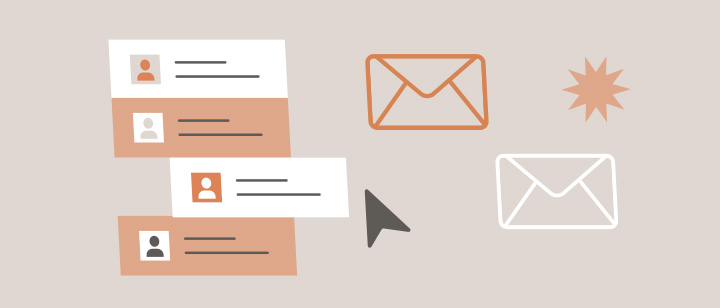
What’s New in BidWell? Import Attendees and Public Items.
Today we're posting a quick update of the exciting features we've been hard at work developing and implementing in the last few weeks.
Import Attendees allows charities to copy and import lists of attendees from past events when sending out invites to new events. This means you don't have to create a new list of attendees from scratch, and instead can use a previous list as it is, or edit it by adding or removing new attendees. This will free up huge amounts of time which can be redirected towards creating bigger, better events.
We've also changed who can view items being auctioned at an event. Previously, only users with a BidWell account were able to see the auctioned items of an event, but now anyone viewing an event can see what's on offer regardless of whether or not they have an account. This makes it easier than ever to showcase your event and attract more bidders to your auction.
We're confident that these features will enhance the BidWell experience, and we can't wait to share more with you in the future. If you have any questions, please don't hesitate to get in contact at support@bidwell.auction.
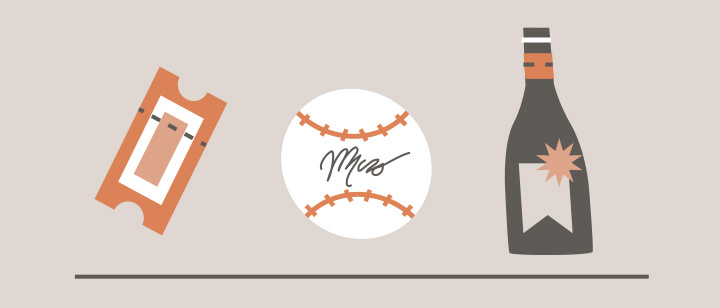
Essential Auction Item Ideas for Your Next Silent Auction
In addition to the audience, the items up for grabs are arguably the most important element of any silent auction. After all, if the auction items don't spark excitement with potential bidders, then there's no incentive to spend money, resulting in less revenue for your charity or cause. Deciding which items to include in your silent auction, however, can be a daunting task. To help simplify this process, we've put together this list of some of the best tried and tested auction items to take your event to the next level.
Classic auction items
When you think of any standard silent auction, you'll likely find some of the following items on any bidding sheet. These items are great because they work for organizations of all sizes, and are usually pretty easy to procure ahead of time.
Gift baskets
Gift baskets are a staple auction item, offer suburb value for money, and are very versatile. Depending on the interests of your audience, you can purchase different gift baskets that appeal to different groups. For example, you might put together a charcuterie basket, a coffee and chocolate basket, or one containing a selection of craft beers.
Event tickets
Tickets to local events are another great auction item that can appeal to a wide range of interests. Between concert tickets, theatre shows, and live sports, there's no shortage of events to choose from.
Wine
Wine is a reliable auction item that almost anyone can get behind. This doesn't mean that you should offer the bottom-of-the-shelf supermarket brand, however. Try and track down some fine vintages, or group together a few quality bottles and offer them as a bundle.
Memorabilia
Signed memorabilia is a great idea for any physical or virtual silent auction. Signed movie posters, album art, baseballs, or first edition books are desirable items that are like to attract a number of lucrative bids.
Extravagant auction items
If you have a bit more of an upmarket audience then it's always a good idea to add a couple of more expensive items to your auction mix.
Travel getaways
Luxury travel packages and getaways make for great big-ticket items for physical and virtual auctions. Just ensure that any tickets you purchase are flexible to accommodate the winners and take into account things such as travel restrictions. Consider contacting local travel companies to try and score really good deals on upcoming flights and holiday retreats.
Fine dining packages
Fine dining packages are irresistible items for those who love to wine and dine. Reach out to upmarket restaurants in your area and speak to them about organizing a multiple course voucher that you can offer to your bidders.
Exclusive tickets to a show
Similar to regular show tickets, exclusive tickets to a theatre, music event or even an opera house is an attractive option for those who enjoy a cultured night out. You could also pair this with an upmarket restaurant in the area for an unforgettable evening.
Virtual auction items
In the time of pandemics, it helps to have an array of auction items that can easily be enjoyed in a digital space.
Streaming services
Subscriptions to streaming services such as Netflix, Spotify, Apple Music, or Amazon Prime make for ideal silent auction items as anyone with an internet connection will be able to use them. And since people are using more digital media than ever, there's a good chance that a year's subscription to their digital service of choice will be in high demand.
Online classes
While online learning was already a massive industry, it has grown to new heights in recent years. Because of the sheer number of classes available, a subscription to an online learning platform or a package of online classes is definitely an auction item that anyone can make use of.
Amazon vouchers
If you want an auction item that appeals to as wide an audience as
possible, then an Amazon voucher will certainly do the trick. Since you
can find pretty much anything on Amazon, there's almost no one who won't
be able to find something of
value to purchase with the winning voucher.
Children and family auction items
If your organization has a child or family slant then it's definitely a good idea to throw in a couple of auction items that would appeal to parents and families.
Family photoshoot
Good photographers are hard to come by, so consider reaching out to a local freelance photographer or photography studio and solicit their services for a private shoot. Many parents would jump at the chance to have a photoshoot with their family, especially close to Christmas or a birthday.
Cooking classes
Cooking classes are a great family activity that parents and kids of all ages can get behind. Speak to chefs in your community who might want to offer their services or seek out purpose-crafted cooking classes that families would love to attend.
Birthday party events
Bowling, laser tag, or a trip to the arcade - any one of these would make a kid's whole year. See what type of birthday party events are available in your area and figure out how much a birthday plan would cost to put together. This way, you'll have many happy parents too.
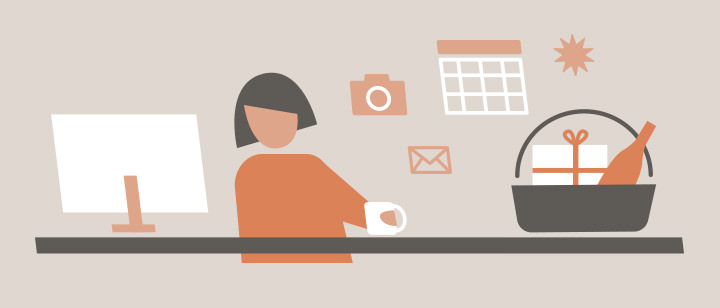
Planning the Perfect Silent Auction
Planning the perfect silent auction can be a daunting and time-consuming task. Between photographing and uploading bidding items, preparing guest lists, and physically or virtually hosting the event, there are a lot of moving parts that have to come together seamlessly in order to execute your event without a hitch. So, where do you start?
Below we'll take a look at how to plan the perfect silent auction and all of the aspects you need to address to succeed and generate as much money for your cause as possible.
Guidelines and goals
The first step to planning a silent auction is to establish guidelines that will inform the logistics of the event, and form the scaffolding around which to build your event strategy. These guidelines include choosing the date of the event, determining the context of the auction (will it be a standalone event or part of something larger?), laying out the budget, and finding a venue (or deciding to host it virtually).
You will also want to consider the goals of your auction. Specific goals will serve as a mark to aim at and help guide the direction you want your auction to head in. A goal might include earning a certain amount of revenue, securing new donors, reaching higher levels of engagement, or forming partnerships with new corporations or business entities.
Audience size
While this technically falls under guidelines, we feel that it deserves its own sub-section. The size of your audience is a crucial factor that will play a large, determining role in how much revenue is generated for your auction. It will also help you determine how many items should be auctioned. Many people make the mistake of auctioning too many items, the thought being that there should be around one item per attendee. But it's important to keep in mind that not every attendee will be a bidder, and that couples and families will likely bid together. A good rule of thumb is to assume that about half of those in attendance will be actively bidding on items.
With this information, you can now more accurately plan how many items to auction, what type of items, and how to maximize the chances of auctioning them.
Auction duration
The length that an auction runs for is also going to be a determining factor when deciding how many items should be included in the auction. Longer auctions - that run for a week or more, for example - might require an influx of more and newer items to keep the selection fresh. Auctions that run for a day will need fewer items or run the risk of selling items below value, or not selling them at all. It's therefore important to find the balance between auction duration and the number of items that you intend to auction.
Attendees
The final, and perhaps most critical, factor to take into account when hosting a silent auction is your audience. Who are they? Where do they come from? How old are they and how much do they earn? The more data you have about your attendees, the more you can fine-tune your auction towards their interests and personalities. Information such as age, gender, income level will help you determine how many items to include, and the type of items that your audience will be more receptive to.
If you can choose items that you know your attendees will value, you will be able to generate more revenue for your cause and increase the chances of your silent auction becoming a wild success.
